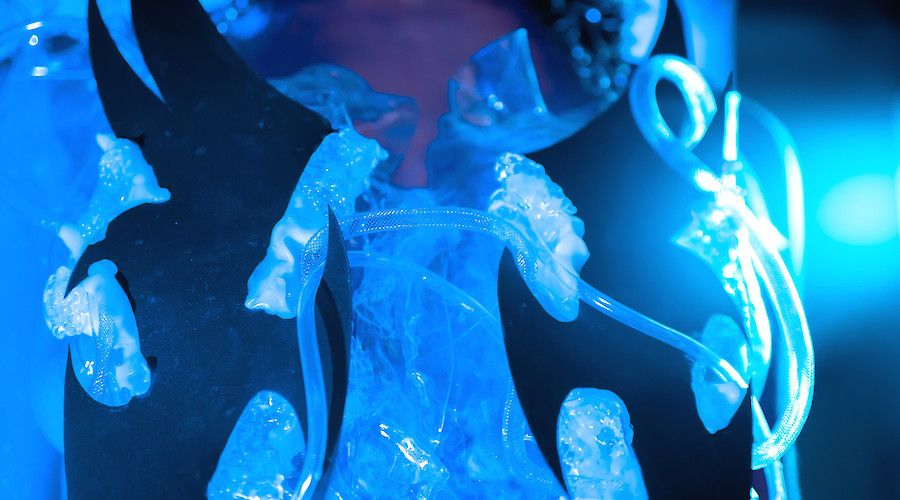(In)Tangible World: Posdigital Corporeality

This group exhibition curated by Lava Art Project brings together recent and new iterations of works by eight Spanish-based artists whose practice is embedded in what the curators call the “digital corporeality” turn in the visual arts.
 (In)Tangible World: Posdigital Corporeality is the first exhibition curated in the USA by Lava Art Project, a platform run by Spanish, UK-based curators Belinda Martín and Paula Ramos Mollá. It brings together recent and new iterations of works by 8 Spanish-based artists, many of whom share a Latino background and whose practice is embedded in what the curators call the “digital corporeality” turn in the visual arts. These works place the human body, in all its fullest materiality, among the digital and material culture we live in and investigate affective responses of today’s society to such hybrid artworks.
(In)Tangible World: Posdigital Corporeality is the first exhibition curated in the USA by Lava Art Project, a platform run by Spanish, UK-based curators Belinda Martín and Paula Ramos Mollá. It brings together recent and new iterations of works by 8 Spanish-based artists, many of whom share a Latino background and whose practice is embedded in what the curators call the “digital corporeality” turn in the visual arts. These works place the human body, in all its fullest materiality, among the digital and material culture we live in and investigate affective responses of today’s society to such hybrid artworks.
The exhibition revolves, first and foremost, around strategies of engagement. It taps into notions of materiality and digitality to shed light into the relationship between the body and different sorts of virtual environments. It interrogates how we see our bodies –specifically hybrid, mestizo, queer and working-class bodies– in the posdigital world, at the intersection between the material and the digital. Here the concepts of race, class and sexuality are explored through digital techniques employed as means of representation and as metaphors for speaking about bodies that are stuck in corporeal limbos.
Each artist is interested in exploring the corporeal through a digital approach. As such, their work is materialised in a myriad of ways, from performative installation (Nora Silva), immersive video pieces (Giulia Jiménez) and moving image installations (Yosi Negrín) to audiovisual sculptural pieces (Alv_Adina, Alicia Arévalo and Pau Jiménez), interactive video games (Jesu Moratiel) and site-specific installations (Andrea Muniáin.) By bringing together both material and phenomenological approaches to the experience of art, this project aims to integrate both digital and analogic modes of aesthetic experience. The idea is to make visitors regain the experience of understanding their own being and body through new forms of subjective representation.
The location of bodies in a digital space that confronts its physical belonging engages with the concept of the hybrid. Just like the mestizo, the hybrid nature of this digital and analogical body of work responds to its position in a sphere that is always in-between. That is, the mestizo resembles the posdigital in that they acquire an ambiguous form defined by their own liminality: as a quasi-digital body or a body with two passports amid what it means to be a fully realised citizen. An arguably non-fully realised entity that dialogues with other ways of body marginalisation, including class and sexuality, which these artworks aim to bring forth.
The 8 participating artists explore the concept of hybridity by using digital and physical media, which they use to deconstruct their own mixed identities: from working class bodies who have reach the status of a ‘creative class’ and racialised migrants fighting to obtain residency permits to queer identities demanding recognition in a predominantly cis male dominant gay and straight world. The body as a subject matter that justifies discrimination because of its physical features is here put into question and contested. By getting to know our flesh through other (digital) lenses, this show proposes that hybridity is a quality of our current bodies, one that is present in every subject and that we must not fear, but embrace.
Opening reception on September 15, from 6 pm to 10 pm at The Clemente Soto Vélez Cultural & Educational Center, with DJ set from 7:30 to 10pm.